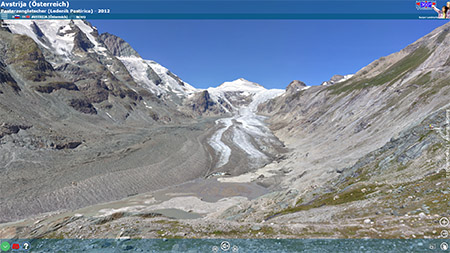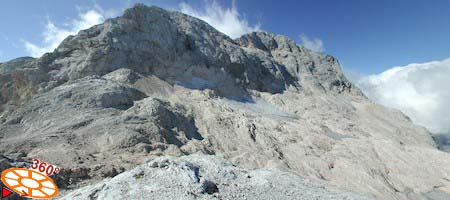 Ledenik je trajno telo gostega ledu ("reka ledu"), ki se neprekinjeno zaradi svoje teže premika navzdol. Ledenik nastane tam, kjer v daljšem časovnem obdobju, desetljetjih, običajno stoletjih, akumulacija snega presega taljenje. Ledeniki se počasi preoblikujejo in se premikajo navzdol, pri tem nastajajo ledeniške poči, seraki in ostale ledeniške oblike. Zaradi svoje teže drgnejo kamnino, krušijo skale in kamenje od matične kamnine in pri tem usvarjajo krnice različne vrste moren. Ledeniki nastajo samo na kopnem in se razlikujejo od morskega ali jezerskega ledu, ki nastajata na vodni površini.
Ledenik je trajno telo gostega ledu ("reka ledu"), ki se neprekinjeno zaradi svoje teže premika navzdol. Ledenik nastane tam, kjer v daljšem časovnem obdobju, desetljetjih, običajno stoletjih, akumulacija snega presega taljenje. Ledeniki se počasi preoblikujejo in se premikajo navzdol, pri tem nastajajo ledeniške poči, seraki in ostale ledeniške oblike. Zaradi svoje teže drgnejo kamnino, krušijo skale in kamenje od matične kamnine in pri tem usvarjajo krnice različne vrste moren. Ledeniki nastajo samo na kopnem in se razlikujejo od morskega ali jezerskega ledu, ki nastajata na vodni površini.
Ledenik delimo na območje kopičenja ledu - akumulacijsko cono v zgornjem delu in območje izgubljanja ledu v spodnjem delu ledenika - ablacijsko cono.
 Glacier is a persistent body of dense ice ("river of ice") that is constantly moving to lower position under its own weight. Glacier forms where the accumulation of snow exceeds its ablation (melting and sublimation) over many years, decades, uzsually centuries. Glaciers slowly deform and flow due to stresses induced by their weight, creating crevasses, seracs, and other distinguishing features. They also abrade rock and debris from their substrate to create landforms such as cirques and moraines. Glaciers form only on land and are distinct from the much thinner sea ice and lake ice that form on the surface of bodies of water.
Glacier is a persistent body of dense ice ("river of ice") that is constantly moving to lower position under its own weight. Glacier forms where the accumulation of snow exceeds its ablation (melting and sublimation) over many years, decades, uzsually centuries. Glaciers slowly deform and flow due to stresses induced by their weight, creating crevasses, seracs, and other distinguishing features. They also abrade rock and debris from their substrate to create landforms such as cirques and moraines. Glaciers form only on land and are distinct from the much thinner sea ice and lake ice that form on the surface of bodies of water.
On a glacier, the accumulation zone is the area above the firn line, where snowfall accumulates and exceeds the losses from ablation, (melting, evaporation, and sublimation). The annual Glacier equilibrium line separates the accumulation and ablation zone annually. The accumulation zone is also defined as the part of a glacier’s surface, usually at higher elevations, on which there is net accumulation of snow, which subsequently turns into firn and then glacier ice. Part of the glacier where snow builds up and turns to ice moves outward from there.
Ablation zone or ablation area refers to the low-altitude area of a glacier or ice sheet below firn with a net loss in ice mass due to melting, sublimation, evaporation, ice calving, aeolian processes like blowing snow, avalanche, and any other ablation.

|
|
||

|
|
||

|
|